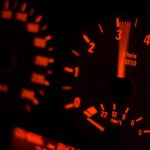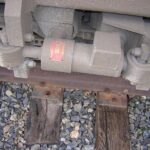3 Things Happening if You Keep Driving with a Bad Clutch
Driving with a bad clutch already sounds so wrong. Because while driving with a good clutch feels like a breeze, a bad clutch would ruin everything.
Here is a list of 3 things happening if you keep driving with a bad clutch.
What Happens if You Keep Driving with a Bad Clutch?
1. Damaging the Clutch Even More
A bad clutch doesn’t mean a destroyed clutch. A slipping clutch can be due to a worn-out clutch plate. Forcefully driving on that would break the clutch plate further increasing the damage and repair bill.
There are a lot of ways a clutch can go bad. A clutch that is slipping can be because of an oil-contaminated clutch disc or due to getting worn out. Replacing a disc would average around $1000. If you don’t get it fixed the clutch would eventually fail, leaving you stranded in the middle of the road.
Slipping caused due to worn-out clutch plates would also damage the pressure plate, adding another $300 in repairs. At that point, it’s better to get the throw-out bearings replaced as well. Basically replacing the whole clutch assembly, which averages around $1500-$2000 depending on the vehicle.
A clutch can also perform poorly if you have issues with the clutch master cylinder. A master cylinder is used in manual transmission with a hydraulically operated clutch. If it starts to have contamination or leaks, the shifting would be a lot rougher damaging the clutch and transmission. Eventually resulting in a non-functional clutch.
2. Damaging the Transmission
Driving with a bad clutch would result in transmission failure. The more faulty the clutch would be the harder and more stressful the gear shift would get. Reducing the lifespan of the transmission due to excess wear and tear.
A clutch is used to transfer engine torque to the drive train. It does so by disengaging and engaging the transmission. The smoother the clutch operates, the smoother you would shift between gears.
Trending Video: How to Easily Bring Back to Life any Old Car Battery and Save Tons of Money (click to watch)
When the clutch fails or starts malfunctioning, it fails to disengage the transmission which results in the grinding of the gears as you shift. This generally happens in the reverse gears as they don’t have synchros. While grinding can happen once in a while due to bad shifting, letting it happen intentionally will reduce your transmission lifespan. An old transmission can also break adding anywhere between $500-$1500 in repairs.
A bad clutch also makes it harder to shift gear, eventually getting stuck. Getting the gear stuck or a missed shift when you are driving can be extremely dangerous both in the city and highway.
Also read: When to Replace Clutch in a Car? (and the Signs to do it)
3. Damaging Engine and Starter Motor
A bad clutch increases engine wear and tear by letting it rev higher than required. This increases engine wear and tear, reducing its life span.
When the clutch goes bad, particularly when it slips, the engine starts to rev higher than regular. This is very noticeable at the lower speeds. The clutch would also feel lighter and there would be an obvious loss of power.
An engine revving higher would not just chug more fuel, and run hotter it would also increase the wear and tear. Since the engine is designed to last over 100,000+ miles it would be fine, but reduced engine lifespan can cause you a lot more trouble down the line.
The overheating of the engine might cause your engine to stall and can also get your engine check light. Fixing a check light can go upwards of $500.
While a bad clutch might damage an engine, a failed clutch will definitely damage the starter motor. If you have a failed clutch and you have to drive some distance without it. You would have to start the car without a clutch putting a lot of stress on the starter motor. Doing that a few times would damage the motor, costly upward to $700 to fix.
Also read: How Long Should Clutch Last? How Much is a New Clutch?
How Long Can You Drive with a Bad Clutch?
Driving with a bad clutch can last till days, weeks, or months depending on the severity of the problem. A car that just started having slipping clutch problems can still be driven for months before it starts failing. Even a car with a broken clutch plate can be driven as long as it is manual.
It is not recommended to drive a vehicle with a bad or failed clutch. Rather If you have a bad clutch you should get it repaired as soon as possible. And only drive as a last resort.
But depending on how bad your bad clutch is, you can delay it for a while. Say you have a leak in your master clutch cylinder. If the leak is minor, you can maintain the fluid level by topping it up whenever needed and keep driving.
Again if you have a slipping clutch that just started, the problem would be felt at the first gear where most torque is needed above which you would be fine. But if your clutch starts slipping at higher gears, that’s the time for repairs. Getting to this point can take months depending on your driving habits.
The point where you should park your vehicle till its clutch is repaired is when:
- The gears are hard to shift or stuck.
- You are getting squealing noises when the clutch is pressed
- Gears are grinding while shifting.
- The clutch is not functional or stuck.
What Will Happen if Your Clutch Fail During Driving?
If your clutch completely goes out while driving, your clutch pedal will be non-functional and you won’t be able to shift.
Losing your clutch while driving is not very uncommon. A malfunctioning clutch can fail in any driving scenario. However, it won’t immediately affect you unless you were shifting gears.
Say if you wanted to overtake, you pressed the clutch to downshift, and it failed. If it fails before disengaging the transmission, nothing happens, just you are stuck in that gear. If it fails after disengaging the transmission then you would be able to shift the gear after a jerk and keep driving.
In any scenario, the one thing that would happen is that you would be stuck in the same gear. If you manage to match the rev with the engine speed, you can upshift and downshift and keep driving.
But if you can’t and you are in a city, you can use engine deceleration to come to a stop. On the highway, however, you can maintain the same speed, find an open lane and drive till find a place to stop. Then use engine deceleration to slow down and come to a stop. It would get quite bumpy though.
Here you can choose to tow the vehicle or try to drive without a clutch which is tricky but possible.
Also read: 5 Reasons Why Europeans Hate Automatic Transmission
How to Drive if you Have to Drive with a Bad Clutch?
Note: Driving your vehicle without the clutch severely damages the transmission synchros and reduces its lifespan. So only drive without a clutch as a last resort.
To drive a vehicle without a clutch needs some precision and timing. But the first step would be starting the vehicle. Most modern vehicles are not able to start in gear due to an ignition lock that prevents starting the car in gear.
Since the ignition lock is operated by a switch located under the clutch pedal, pressing on the clutch pedal would remove the lock so you can use ignition.
Starting vehicle without clutch:
So to start your vehicle without the clutch,
- Start by putting the car in first gear. Press the clutch all the way down and turn the ignition.
- As you turn your key, the vehicle would lurch forward and start running due to the torque. If you are only traveling a small distance, just maintain the pace, and you would be fine. Use engine deceleration and brakes to slow down and stop.
Shifting Gears without Clutch:
To change the gear, however, you will have to rev-match the engine speed with the drivetrain. This is what a clutch does, but without it, you would have to do it manually. The only problem is timing.
Upshifting
You can only shift gears without the clutch if you know exactly at what speed you would normally shift gears. Say if you would normally shift from 1st to 2nd at around 20 mph and 2000 rpm, then that’s the point where engine drivetrain speeds are in sync.
- So to shift from 1st-2nd, bring your vehicle at a slightly higher speed than 20mph or 2000+ rpm, let go of the accelerator, simultaneously try to quickly shift to 2nd.
- To have a successful shift, you need to get out of the gear before it starts to slow down. If you are not too sure about the rpm as long as you know the speed you can shift.
A rougher way to do this is by bringing the vehicle at higher rpm, and shifting gear as you let go of the accelerator. You might fail once or twice, but once you get the right speeds, you can shift gears.
If you need to slow down, get your gear in neutral and you can slowly come to halt using brakes
Downshifting
- To downshift, first put your car in neutral and let it slow down. Say you generally shift to 3rd at 3000 rpm or 42mph, that is the speed you would slow down while in neutral.
- Now rev the engine at 3000 rpm, let go of the accelerator, and simultaneously shift to third.
- As you hit third, apply a little throttle and continue driving. Avoid stalling at all costs.
By using this method you can upshift and downshift without using any clutch. When you need to stop, bring the car to neutral and simply use the brakes.






